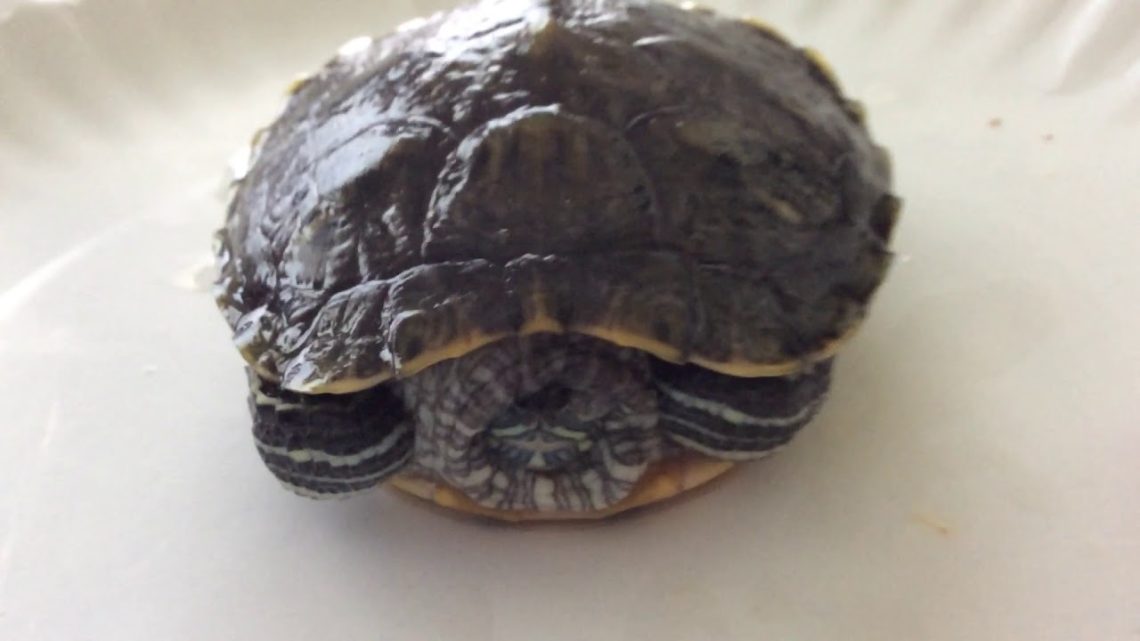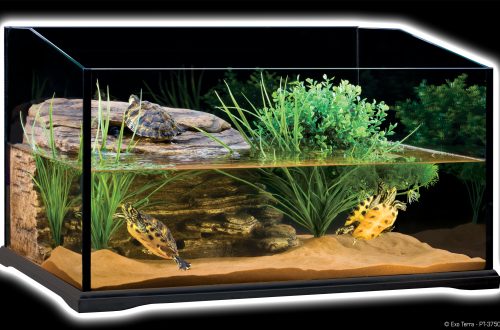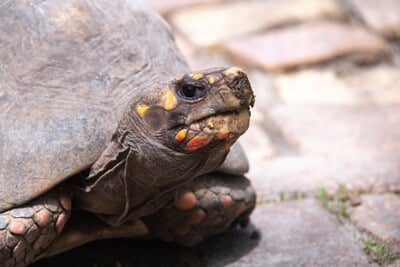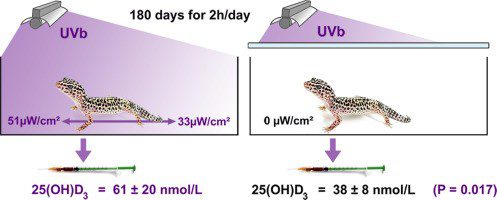
Turtle won’t open its eyes
One of the most common reasons for turtle owners to visit a veterinarian is the complaint that the turtle has stopped opening its eyes. Often, pets also have swollen eyelids, they constantly rub and scratch them with their front paws or on the decorations in the terrarium.
Often, projecting turtle diseases onto some human ailments, people decide that their pet has allergies or irritations from insufficiently clean water in the aquarium. However, the causes of such symptoms in reptiles are most often associated with other diseases.
Consider the most likely options.
If a similar problem touched two eyes at once, then most likely the cause of the occurrence is systemic. If the eyelids swell and the conjunctiva becomes inflamed, then we are dealing with blepharoconjunctivitis, most often associated with a lack of vitamin A (hypovitaminosis A). In this case, often under the lower (moving in turtles it is the lower eyelid) eyelid, the remnants of the epithelium accumulate, outwardly resembling purulent discharge. Subsequently, if this problem is left to chance, a bacterial infection may also join. And since vision plays an important role in nutrition in turtles, with such an inflammatory process, the turtle also loses its appetite.
Often the reason is a violation of feeding conditions, when the turtle does not receive vitamin supplements with food. Therefore, for treatment, it is necessary to compensate for the lack of vitamin A in the body with two injections of the Eleovit vitamin complex, which is injected with an interval of 14 days and at a dose of 0,6 ml of the drug per 1 kg of animal weight. In no case should you rub vitamin preparations into the skin and shell or drip into your mouth. This can easily lead to overdose and skin problems. The eyes will need to be thoroughly washed twice a day with warm saline or a decoction of chamomile and then instilled with Sofradex drops (drip for no more than 5 days), Tsipromed, Albucid, etc. If there is severe inflammation and redness of the eyelids, then gentamicin or tetracycline eye ointment.
It is important to drip drops under the eyelid into a clean eye and, after this procedure, leave the aquatic turtles on dry land for about 30 minutes.
Until the turtle begins to eat, you can support it with subcutaneous injections of Ringer and Glucose 5%.
Other common causes of bilateral eye involvement are corneal burn too low ultraviolet lamps. It is good to use Korneregel for treatment.
If eye damage one-sided, that is, it affects only one eye, then most likely the turtle received injury or is it the effect of a bacterial infection. In case of an infectious process, drops containing an antibiotic (0,3% gentamicin drops, tobramycin, tetracycline, etc.) are used for treatment, which are instilled 2-3 times a day in the eye, after washing it. And at night it is good to lay eye ointments with an antibiotic under the eyelid. Treatment usually takes at least 10 days.
With injuries and hemorrhages in the eye apply eye drops “Sofradex” in the complex and an hour after them, “Emoxipin” 1% is instilled. Procedures are carried out 2 times a day, 7 days.
In general, eye diseases can be of a diverse nature and affect any part of the eye. It occurs in turtles and cataracts, and uveitis, and panophthalmitis, and diseases of the optic nerve. Therefore, for differentiation, it is better to contact a veterinary clinic. It is better not to start the inflammatory process of the eyes. There are cases when, with severe inflammation without treatment, the fusion of the eyelids occurs. Therefore, it is best to show the turtle to a specialist who will prescribe treatment and show how to properly carry out the procedures.





